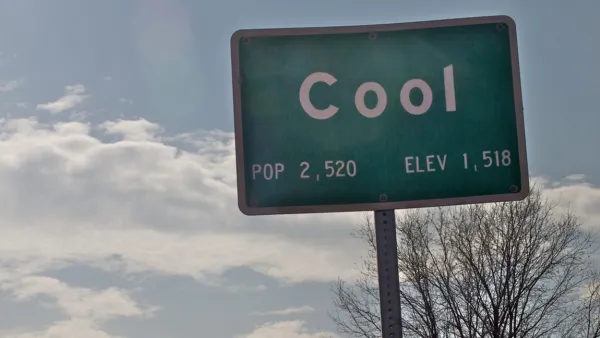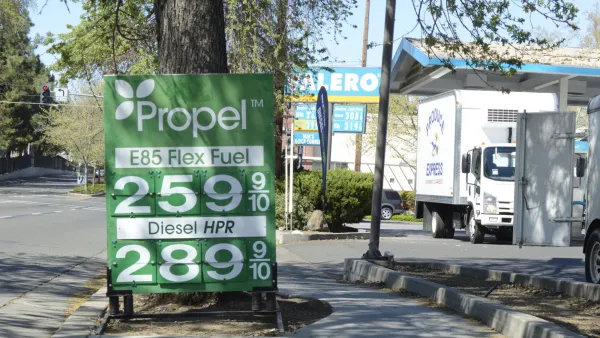California's embattled high speed rail, which appears to be on life support following a Nov. court ruling, will receive funds from the state's carbon cap & trade program in Gov. Brown's budget to be released Friday. But will it make a difference?
"Gov. Jerry Brown plans to propose spending millions of dollars in fees paid by carbon producers to aid the state's controversial high-speed rail project," writes political reporter Christopher Cadelago.
Brown is expected to include the proposal in the annual budget plan he will release Friday (Jan.10). Brown has made high-speed rail a priority of his administration, and he suggested two years ago that cap-and-trade revenue, which is designed to reduce greenhouse gas emissions, would be a future source of funding for the project.
According to the Sacramento Bee's sources, it could be "several hundred million dollars this year."
But the use of cap-and-trade money for high-speed rail could be problematic. The nonpartisan Legislative Analyst’s Office (LAO) said in 2012 that while the rail project could eventually help reduce greenhouse gas emissions, benefits would not be seen until after 2020, the year by which California is seeking to meet its greenhouse gas reduction goals (according to the law that set that goal, AB 32).
Notwithstanding the possible deathblow of a legal ruling in late November followed by a major setback issued by the Surface Transportation Board, the High Speed Rail Authority is plowing forward, using eminent domain to acquire properties in downtown Fresno, though not without opposition.
Thanks to several factors, including an upturn in the economy and the passage of Brown's signature tax initiative, Proposition 30, in Nov., 2012, the LAO "projected last fall that the state could post a $5.6 billion surplus by June 2015, with annual surpluses reaching $8.3 billion by the 2016-17 budget year."
FULL STORY: Jerry Brown eyes cap-and-trade money for high-speed rail

National Parks Layoffs Will Cause Communities to Lose Billions
Thousands of essential park workers were laid off this week, just before the busy spring break season.

Retro-silient?: America’s First “Eco-burb,” The Woodlands Turns 50
A master-planned community north of Houston offers lessons on green infrastructure and resilient design, but falls short of its founder’s lofty affordability and walkability goals.

Delivering for America Plan Will Downgrade Mail Service in at Least 49.5 Percent of Zip Codes
Republican and Democrat lawmakers criticize the plan for its disproportionate negative impact on rural communities.

Test News Post 1
This is a summary

Test News Headline 46
Test for the image on the front page.

Balancing Bombs and Butterflies: How the National Guard Protects a Rare Species
The National Guard at Fort Indiantown Gap uses GIS technology and land management strategies to balance military training with conservation efforts, ensuring the survival of the rare eastern regal fritillary butterfly.
Urban Design for Planners 1: Software Tools
This six-course series explores essential urban design concepts using open source software and equips planners with the tools they need to participate fully in the urban design process.
Planning for Universal Design
Learn the tools for implementing Universal Design in planning regulations.
EMC Planning Group, Inc.
Planetizen
Planetizen
Mpact (formerly Rail~Volution)
Great Falls Development Authority, Inc.
HUDs Office of Policy Development and Research
NYU Wagner Graduate School of Public Service




























